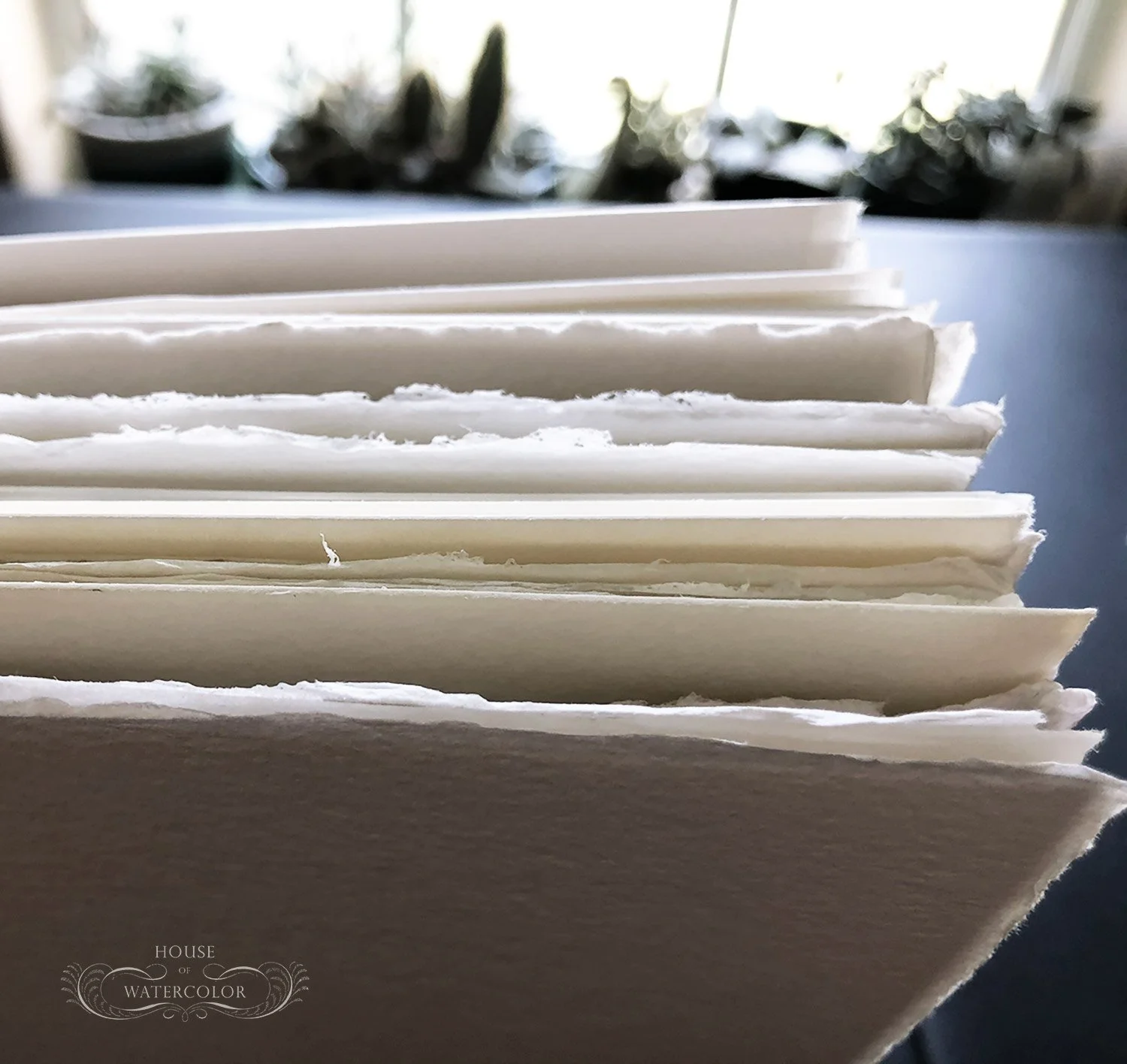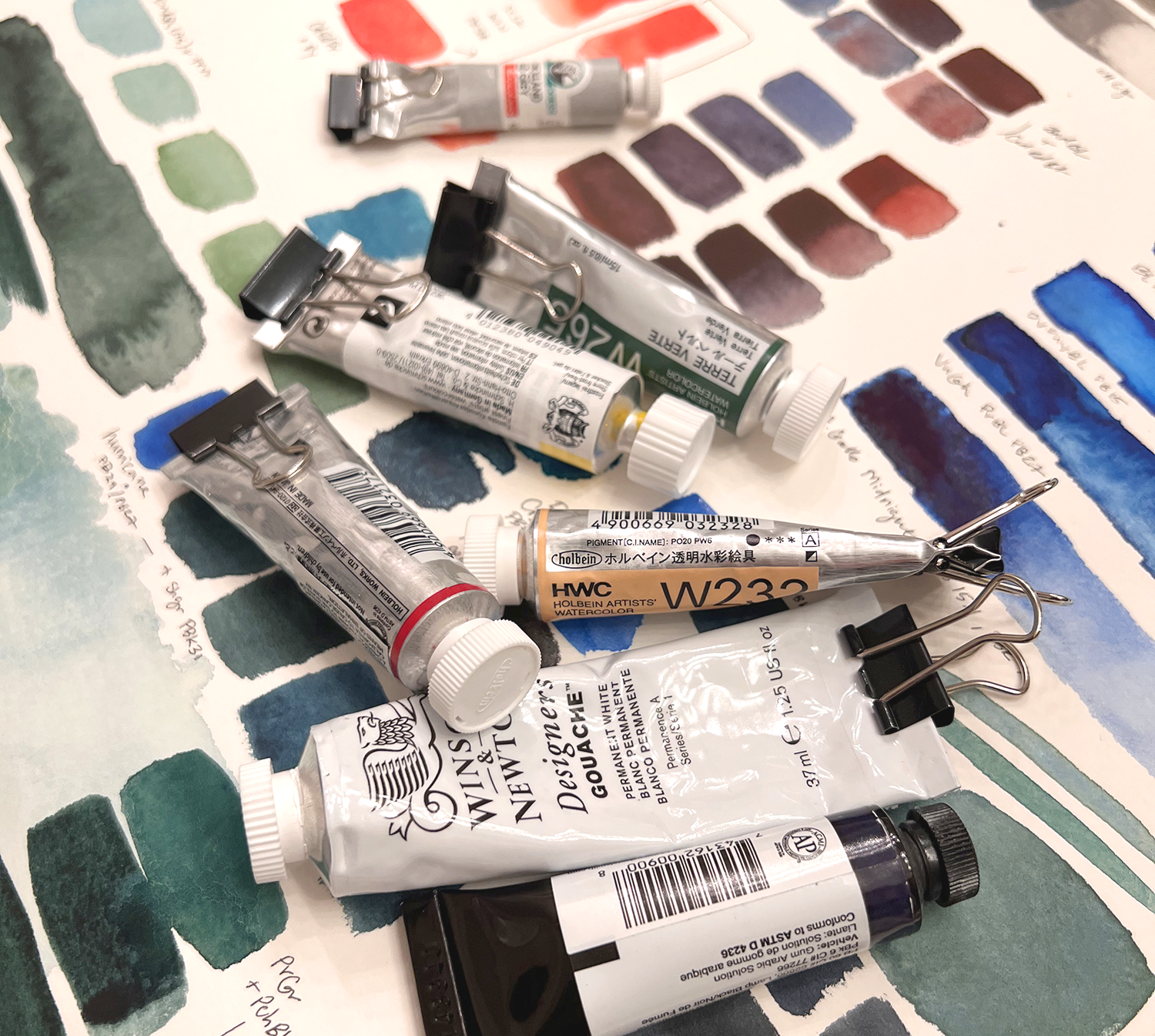MATERIALS
PAPER
Blocks, sheets, hot press, cold press, gsm's, sizing. How can we navigate all of these terms and know which paper is best for our subject matter? Here, I will do my best to help you understand these terms and determine which paper is right for you.
Before I understood the characteristics of my paint, I used to look at each pigment simply as a particular color. Now that I know the unique qualities my pigments can offer, I no longer fight my watercolor paintings. You can learn how to purposely choose a color's characteristics to support your subject matter.
Expensive watercolor brushes do not guarantee a successful painting, but they are also quite possibly the most important tool for learning how to paint with watercolor. Understanding the ratio among water, pigment, and brush are the key to controlling the medium.
PALETTE
The word "palette" has two meanings for the watercolorist. It can describe the particular combination of pigments in your personal collection of paint. It can also refer to a palette that physically holds your pigment. A palette for your palette, if you will.
Mediums help to alter pigments. They can improve the flow of a watercolor wash, further granulate the pigment, and even add some shimmer.
There are several tools that have greatly helped me improve my watercolor painting skills that are separate from traditional materials. Printers, scanners, apps, and other such items can help your technique and workflow grow in leaps and bounds.












